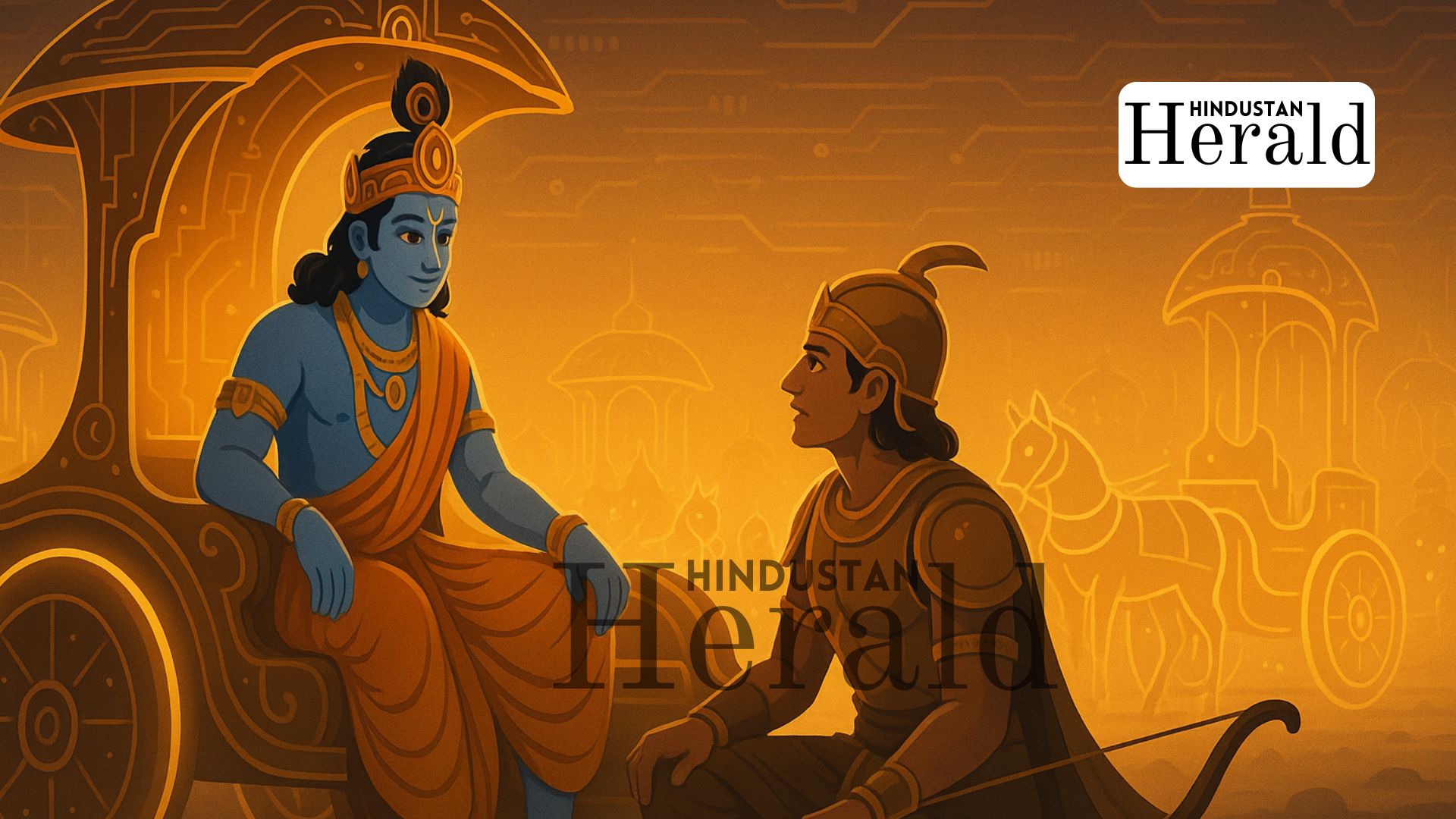New Delhi, October 10: The Mahabharat is returning, and this time, it’s powered by artificial intelligence. On October 25, an AI-reimagined Mahabharat will premiere on WAVES OTT, a free streaming platform run by Prasar Bharati. From November 2, it will also air every Sunday morning on Doordarshan the same channel that made the original epic a national event in the 1980s.
It’s a full-circle moment: the story that once brought families together in front of bulky TVs will now stream on phones, created by algorithms instead of actors.
How This New Version Works
The project is a joint venture between Prasar Bharati and Collective Media Network’s Historyverse, a digital studio experimenting with “AI-powered microdramas.”
Each episode will run only three to four minutes. The entire process from script to visuals is created with AI tools. Producers say this helps modern audiences experience the epic in short, visually rich bursts.
They call it a “next-generation retelling.” The show’s AI system reportedly builds characters, battlefields, and emotional expressions based on the original text.
The idea is simple: use new technology to make an old story feel alive again. But the approach also raises questions about how much of that “life” remains when machines take over the creative process.
The Story in Short Bursts
Unlike older TV epics that stretched for hours, this microdrama format breaks the Mahabharat into hundreds of small clips. Each is designed for quick viewing on phones and social media.
The pacing will feel different. A single emotional moment like Arjuna’s hesitation on the battlefield or Draupadi’s humiliation in court will now play out in just a few minutes.
That may make the show easier to follow for younger viewers, but it could also flatten the story’s depth. The moral debates and spiritual lessons that once unfolded slowly might feel rushed.
Still, the format is a bold experiment. It tries to connect a 3,000-year-old epic with audiences who live in 15-second reels.
Why AI in Mythology Is a Sensitive Topic
AI-generated storytelling sounds exciting, but it comes with concerns.
The Mahabharat isn’t just a story, it’s part of India’s spiritual and cultural identity. When AI recreates Krishna, Karna, or Draupadi, the question becomes: whose version of them are we seeing?
If the software draws from existing art and digital images, can it misrepresent characters or symbols? Who takes responsibility if something looks wrong or feels disrespectful?
So far, producers have said human editors and historians are supervising the process. But AI’s unpredictability means the line between creativity and distortion can blur easily.
That’s why critics are calling for more transparency about the data, the design, and who has final control.
Old Channel, New Strategy
This collaboration between WAVES OTT and Doordarshan shows how India’s public broadcaster is trying to stay relevant in the digital age.
WAVES gives the project a younger, tech-friendly audience, while Doordarshan provides trust and nationwide reach. It’s a smart combination: free online streaming for one group, traditional TV for another.
It’s also a signal that Indian public media wants to lead, not just follow, in the new wave of AI entertainment.
But the strategy could backfire if the show feels too artificial. Mythological storytelling depends on emotion and faith two things that are hard for machines to reproduce.
What People Are Saying Online
Early reactions on social media are mixed.
Many users are curious. They want to see how AI handles the epic’s scale and detail. Some have called the teaser “visually stunning.” Others say it looks “beautiful but cold.”
Then there are the skeptics. One popular comment said, “You can’t teach a machine about dharma.” Another worried that the show might “turn religion into code.”
And of course, there are comparisons. Earlier this year, a viral fan-made trailer imagined Chris Hemsworth as Arjuna and Chris Evans as Krishna. That video was unrelated, but it set the stage for this AI fascination with ancient stories.
For now, most viewers seem to agree on one thing they’re intrigued, but cautious.
Why This Matters Beyond Entertainment
If this AI-driven Mahabharat succeeds, it could change how Indian entertainment is made.
Studios may rely less on massive film crews and more on technology. That could lower costs, speed up production, and create new opportunities for smaller creators.
But it also challenges the idea of authorship. When AI generates the story and visuals, who is the artist? The coder? The dataset? The machine itself?
For Doordarshan, the project represents both nostalgia and reinvention. The channel that once united a nation around one screen is now testing whether AI can do the same or at least try.
Between Faith and the Future
It’s easy to be cynical about this. Yet there’s something poetic about the Mahabharat a story about power, ego, and destiny being retold through the most powerful tool of our age.
Every generation has reshaped this epic: oral storytellers, playwrights, filmmakers. Now, AI joins that line.
Still, the question lingers: can a machine truly understand the moral weight of a story that asks what it means to be human?
We’ll find out when Mahabharat: AI-Reimagined premieres on October 25.
Stay ahead with Hindustan Herald — bringing you trusted news, sharp analysis, and stories that matter across Politics, Business, Technology, Sports, Entertainment, Lifestyle, and more.
Connect with us on Facebook, Instagram, X (Twitter), LinkedIn, YouTube, and join our Telegram community @hindustanherald for real-time updates.
Covers films, television, streaming, and celebrity culture with a focus on storytelling trends.






